Papers by Prof Dr Yehia Fahmy
An extensive background overview on the use of agricultural residues (wastes) for production of p... more An extensive background overview on the use of agricultural residues (wastes) for production of paper, board, binderless board, energy, different types of fuels by pyrolysis (solid, liquid and gaseous fuel), many petrochemicals substitutes, charcoal (activated carbon), dissolving pulps and rayon. It includes both scientific and industrial data, case studies, current status, sustainability of paper and sugar industries, green nanotechnology, and future prospects.
Keywords: Agricultural Residues (Wastes); Paper and Board manufacture; Sustainability of Paper and Sugar Industries; Green Nanotechnology; Future Prospects

Biomass pyrolysis is a promising renewable sustainable source of fuels and petrochemical substitu... more Biomass pyrolysis is a promising renewable sustainable source of fuels and petrochemical substitutes. It may help in compensating the progressive consumption of fossil-fuel reserves. The present article outlines biomass pyrolysis. Various types of biomass used for pyrolysis are encompassed, e.g., wood, agricultural residues, sewage. Categories of pyrolysis are outlined, e.g., flash, fast, and slow. Emphasis is laid on current and future trends in biomass pyrolysis, e.g., microwave pyrolysis, solar pyrolysis, plasma pyrolysis, hydrogen production via biomass pyrolysis, co-pyrolysis of biomass with synthetic polymers and sewage, selective preparation of high-valued chemicals, pyrolysis of exotic biomass (coffee grounds and cotton shells), comparison between algal and terrestrial biomass pyrolysis. Specific future prospects are investigated, e.g., preparation of supercapacitor biochar materials by one-pot one-step pyrolysis of biomass with other ingredients, and fabricating metallic catalysts embedded on biochar for removal of environmental contaminants. The authors predict that combining solar pyrolysis with hydrogen production would be the eco-friendliest and most energetically feasible process in the future. Since hydrogen is an ideal clean fuel, this process may share in limiting climate changes due to CO 2 emissions.
Keywords Sustainable and renewable energy source; Fossil-fuel alternatives; Biomass pyrolysis; Biofuel (bio-oil, biogas, biochar); Charcoal (activated carbon); Hydrogen fuel
Plant proteins are used – for the first time – in this work as bulk binders for cellulosic fibers... more Plant proteins are used – for the first time – in this work as bulk binders for cellulosic fibers in paper composites. Soy bean protein and wheat gluten were denatured by two methods, namely by: urea +NaOH and by urea +NaOH+ acrylamide. Addition of increased amounts of the denatured proteins resulted in a significant increase in all paper strength properties. Soy protein led, in addition, to a remarkable enhancement
in opacity. The use of proteins increased kaolin retention in the paper composites, while keeping the paper strength higher than the blank protein-free paper.
The results show that plant proteins are favorable than synthetic adhesives; because they are biodegradable and do not cause troubles in paper recycling i.e. they are environmentally friendly.
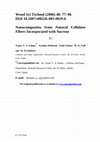
The present work shows for the first time worldwide that sucrose can be easily placed by simple t... more The present work shows for the first time worldwide that sucrose can be easily placed by simple techniques within the micropores or nanostructure of the mercerized non-dried cotton linter fibers to create a low-cost cellulose substitute. Such sucrose-containing nanocomposites find suitable use as specialty absorbent paper. Relative to the sucrose-free paper, the sucrose-containing counterparts exhibit greater breaking length and remarkably high water uptake (WRV) up to a sucrose content of 8–15% w/w. Mercerization of cotton linters before incorporating them with sucrose greatly enhanced the retention of sucrose in the prepared paper nanocomposites as compared to the case of unmercerized cotton linters. We assume that regions of the cell wall lamellae, on both sides of the sucrose spacers, are stressed during drying because the sucrose spacers hinder them to relax. This leads to a strain, which makes some microfibrils partially released and protrude out of the fiber. Thus, a sort of fiber beating takes place. We called this phenomenon incorporation beating or encapsulation beating to differentiate it from chemical and mechanical beatings, and it explains the great increase in breaking length of the paper nanocomposites prepared from the mercerized non-dried sucrose-loaded linters.
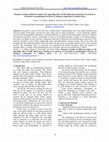
Soy-protein is used, for the first time, as bulk binder in papermaking from wood pulps (hardwood ... more Soy-protein is used, for the first time, as bulk binder in papermaking from wood pulps (hardwood and softwood pulps). Wood pulps represent the major pulps used for paper production. A green denaturing method, involving only biodegradable compounds, was found sufficient to expose the functional groups of proteins. Addition of denatured soy-protein caused a considerable increase in all strength properties of paper, at all beating degrees. The effect was highest in non-wood (for comparison) followed by hardwood and softwood pulps respectively. This could be correlated to ratio of fiber length/width, fines, and hemicellulose content of pulps. The less the ratio, and the higher the fines and hemicellulose content, the more was the increase in strength properties; due to more exposed surfaces. The outstanding effect of soy-protein was magnifying the desired opacifying effect and retention of inorganic fillers e.g. kaolin, while eliminating the loss in strength, which occurs normally due to fillers.

For the first time, it is shown that water medium allows dissolved methylmethacrylate monomer to ... more For the first time, it is shown that water medium allows dissolved methylmethacrylate monomer to penetrate water-swollen natural nanoporous structure of never-dried cotton fibers (biological cellulose fibers). Unique cellulose copolymer nanocomposites are obtained by green nanotechnology process (solvent is water-ideal green solvent-and reaction conducted at 25ºC). It was found that after only 2 h polymerization the conversion of MMA monomer to polymer was 42.97%, compared to zero polymer conversion in absence of never-dried cotton. Higher water uptake i.e. water retention value (WRV) of the cellulose-PMMA-copolymer nanocomposites prepared from never-dried biological cotton fibers, and microscopic investigations confirmed that the polymer was mostly grafted on the cellulose rather than homopolymer filling the fiber pores. Early products of polymerization e.g. dimmers and trimmers act as spacers and widen the porous structure of cell wall, thus increasing water retention value (WRV). We called this phenomenon "intra-polymerization". As the process of polymerization proceeds, polymerization within cell walls leads to cell wall destruction, increasing WRV of fibers, giving superabsorbent end product. The produced unique biological cotton-PMMA green nanocomposite we discovered find their use in several advanced medical and pharmaceutical fields; as nonwoven pads, bandages or board-like transparent nanocomposites of bending strength up to 955 kg/cm 2 .
The reactivity of cellulose fibers depends on the extent of agglomeration and adhesion of the ele... more The reactivity of cellulose fibers depends on the extent of agglomeration and adhesion of the elementary fibrils due to drying and on the capacity of the reagent to dissoc. the agglomerated elementary fibrils. Mercerization of the fibers dissocd. the microfibrils into the original elementary fibrils and exposed the cell wall surfaces. Cotton fibers subjected to reaction while still in the never-dried biol. state, have similar reactivity as rayon.
It is shown that cellulose in the biological, i.e. never-dried, native state is much more reactiv... more It is shown that cellulose in the biological, i.e. never-dried, native state is much more reactive than air-dried or conventional cellulose. In the biological state, cellulose fibres are as reactive as the never-dried regenerated cellulose. It is indicated that reactivity of cellulose is correlated to the extent of dissociation of microfibrils to elementary fibrils or protofibrils rather than to crystallinity.
Acetylated samples obtained from biological cotton are characterized by enormously higher water uptake than acetate obtained from conventional cotton. Despite acetyl contents of about 16%, such samples possessed higher WRV than unacetylated conventional cotton. This is accounted for and demonstrates that cellulose derivatives of different properties could be obtained from biological cellulose.
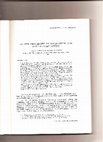
A high fibre saturation point (FSP) of about 120% is ascribed to pure cellulose
nature fibre in ... more A high fibre saturation point (FSP) of about 120% is ascribed to pure cellulose
nature fibre in the never-dried state irrespective of plant origin, as well as to
never-dried regenerated cellulose fibres.
Since FSP is a measure of fibre porosity, all never-dried fibrous cellulose may possess the same accessibility to reagents. Reactivity in such a state represents the highest cellulose reactivity in its coherent fibrous state. This was confirmed experimentally. After nature-, air-drying cellulose fibres respectively and after treating them with water, different fibres revert to the original biological cell wall volume or never-dried volume lo different extents. While dry-regenerated fibres possess a high degree of reversion in water into the never-dried state, dry cotton reverts to a much smaller- degree. Acid treatment also failed to affect considerably the reversion of cotton fibres. Treatment with sodium hydroxide solution of about 18% concentration reverts cotton cell wall completely to the original biological volume as far as FSP is concerned. This is termed 100% reversion.
Higher degrees of reversion indicate the weakening or the beginning of the loss of fibrous structure and its transformation into a more or less non fibrous gel structure, usually accompanied by partial cellulose dissolution. Some examples are given in the paper.
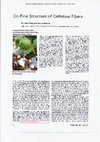
For the first time, never-dried cotton from unopened green cotton bolls was isolated and characte... more For the first time, never-dried cotton from unopened green cotton bolls was isolated and characterized (we designated it as biological cellulose fibers). Several methods for determination of the swellability of cellulose fibers are discussed with respect to their reliability in measuring cell-wall water content. The fiber density, as measured by H2O or xylene displacement, was interpreted in terms of fiber fine structure, i.e., the degree of packing of cellulose molecules in the protofibril. The water retention value of never-dried cotton, isolated from green unopened cotton bolls, was close to that of never-dried rayon. The never-dried cotton became cryst. for the first time after air drying. Water treatment of the air-dried fibers failed to return the cell wall to its original biological volume. The reactivity of cellulose fibers depended on the degree of preservation of the biological volume and on the chemical treatments and drying.

Figure 1 linked to Article: Fahmy Y, Mobarak F (1971) On fine structure of cellulose fibers. Sven... more Figure 1 linked to Article: Fahmy Y, Mobarak F (1971) On fine structure of cellulose fibers. Svensk Papperstidning 74(1):2-9 ABSTRACT: For the first time, never-dried cotton from unopened green cotton bolls was isolated and characterized (we designated it as biological cellulose fibers). Several methods for determination of the swellability of cellulose fibers are discussed with respect to their reliability in measuring cell-wall water content. The fiber density, as measured by H2O or xylene displacement, was interpreted in terms of fiber fine structure, i.e., the degree of packing of cellulose molecules in the protofibril. The water retention value of never-dried cotton, isolated from green unopened cotton bolls, was close to that of never-dried rayon. The never-dried cotton became cryst. for the first time after air drying. Water treatment of the air-dried fibers failed to return the cell wall to its original biological volume. The reactivity of cellulose fibers depended on the degree of preservation of the biological volume and on the chemical treatments and drying.

Tar and charcoal could be produced in high yields from bagasse by applying a rapid continuous pyr... more Tar and charcoal could be produced in high yields from bagasse by applying a rapid continuous pyrolysis process at a relatively low temperature. The ether extractives of the pyrolytic tar and oil amounted to 9.4 % based on bagasse. Phenols represented 79 % of these extractives. Gas chromatographic separation showed that guaiacol and its derivatives constituted 38 % of the identified simple phenols. There were much smaller amounts of syringol and none at high pyrolysis temperatures. Depithing did not reduce the ash content of the charcoal, but it yielded an environmentally clean charcoal containing practically no sulfur or nitrogen. It was necessary to remove the fine particle size fraction of the bagasse after grinding in order to reduce the ash content of the charcoal The carbon content of the charcoal increased rapidly with increasing temperature, and reached 96 % at 720 ~ C. The charcoal had a remarkably high adsorption capacity despite the fact that it had not been subjected to any activation treatment.
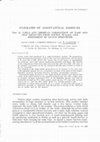
Cotton stalks were pyrolysed by a rapid continuous method. The temperature range for producing ma... more Cotton stalks were pyrolysed by a rapid continuous method. The temperature range for producing maximum yield of char and tars respectively oils was found to be from 100C to 600C. Below 400C useless char of low degree of carbonization was obtained. Above 600°, almost gasification pyrolysis took place. The increase of the temperature within this range decreased the total tar yield. The yield of the phenolic constituents of the tar decreased but the ratio neutrals to acids in the tar increased. Fine grinding of the stalks before pyrolysis led to an increase in the total yield of the phenolic mixture but to a remarkable decrease in the phenols with simpler molecular structure indicating favoured secondary condensation reactions . Assessment of lignin structure by the rapid pyrolysis method used showed that cotton stalks lignin belongs to the guaiacyl-syringyl type hut with a higher ratio of syringol. Syringol constituted 35 % of the identified phenols and with its derivatives it made up 57 % while guaiacol made up only 13 % and with its derivatives 24.4%. One can thus rather speak of a syringyl-guaiacyl type. Suitability of cotton stalks pyrolytic oil as a source of chemicals and energy is discussed especially in connection with hazards due to storage of the stalks for use as indoor fuel by the farmers.
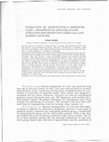
Recent concern in reserves of fossil sources of energy and chemicals has revived the interest in ... more Recent concern in reserves of fossil sources of energy and chemicals has revived the interest in lignocellulose pyrolysis. This has necessitated a somewhat different look to pyrolysis, and a more understanding of its mechanism. The result has been a great progress in pyrolysis technology.
The present study outlines in a concise form the history of pyrolysis up to the present time, and it attempts to correlate various aspects of this rather versatile subject. Pyrolysis has now become a more controllable process and could be oriented to deliver solid, liquid and gas products groups within a wider ratio range and with more or less fixed chemical composition. It is even now possihle to speak not only of gasification but also of liquefaction pyrolysis. Technology of pyrolysis is very flexible. The reactors or furnaces, at present, can be stable or mobile, mini or of high capacity, and the process can he slow or very rapid, batch or continuous, mechanized or unmechanized. Pyrolysis being thermally self sustaining is in several aspects preferable to hydrogenolysis and biological gasification for producing chemicals including those used as sources for energy. In this report, pyrolytic fuels including those prepared from synthesis gas are compared to fossil fuels.
This part serves as introduction and background of the following parts of this work.
The self-bonding of air-dry bagasse and bagasse pith exhibited during hot-pressing in a closely f... more The self-bonding of air-dry bagasse and bagasse pith exhibited during hot-pressing in a closely fitting mold is studied under varying conditions. It is shown that the ability of the particles to pack up closely is most important to self-bonding. The pith fraction which causes great trouble in paper and fiberboaid making gives a highly densified, plastic-like product superior to t hose from whole or depithed bagasse. This is attributed to the high lumen to cell wall ratio which favours the formation of interparticle bonds. Bending strength up to 130 N/nm2and water absorption äs low äs 10% are obtained at 25.5 MPa molding pressure and 175 °C. Increasing the initial moisture content of pith from 7 to 14 percent results in deterioration of both strength and water resistance while the contrary applies to depithed bagasse. Eventually, the mechanism of self-bonding is discussed.

Hardboard was prepared from high yield semichemical cotton stalks, sugar-cane bagasse and kenaf p... more Hardboard was prepared from high yield semichemical cotton stalks, sugar-cane bagasse and kenaf pulps by different pulping processes in each raw material, and from an industrial rice straw pulp, in absence and after addition of different amounts of phenol-formaldehyde resin. The differences in hardboard properties obtained by different pulping process from one and the same material generally decreased or vanished upon increased resin addition. In the case of cotton stalks, debarking before pulping did not lead to any improvement in bending strength or water resistance. An improvement took place only at highresin addition. Thus, it is proved that bark does not represent an obstacle for using cotton stalks for hardboard manufacture. The bending strength and water resistance values obtained from the cotton stalks, sugar-cane bagasse and kenaf pulps were in general better than those boards obtained from the industrial rice straw pulp, Further purification of rice straw pulp improved the quality somewhat in the case of low resin addition but at the cost of yield.
Liquid phase acetylation of flax straw particles prior to sheet formation and pressing did not le... more Liquid phase acetylation of flax straw particles prior to sheet formation and pressing did not lead to any improvement in water resistance, despite introduction of acetyl groups up to 11%.
Vapour phase acetylation after the particles have been pressed into finished form, was more successful. An improvement of about 35% in water resistance was achieved, while the bending strength decreased by only about 5%.
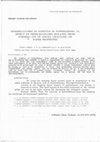
The isolation of hemicelluloses from different plant materials and pulps with the aim of investig... more The isolation of hemicelluloses from different plant materials and pulps with the aim of investigating their suitability as binders in paperrnaklng was reported in the previous five parts (I-V). It was shown that some hernicelluloses could be used successfully as binders. Retention of the added hemicelluloses by the paper sheet and their binding capacity were correlated to some hemicellulose properties. In the present paper, the study is further extended to include hemicellulose isolated from the steeping lye used in the manufacture of viscose. Such hemicellulose possessed somewhat lower retention ability and binding capacity. This was accounted for. However, the use of such hemicellulose could be worth while due to economic reasons. Correlation between the properties of this hemicellulose and its retentionability and binding capacity was in harmony with that found for other hemicelluloses.
Hemicelluloses isolated from bagasse were subjected to soda-oxygen oxidation. The intrinsic visco... more Hemicelluloses isolated from bagasse were subjected to soda-oxygen oxidation. The intrinsic viscosity decreased and carboxyl content increased after an initial drop by increasing oxidation time. The oxidized bagasse hemicellulose was added to a commercial softwood pulp as well as to a bleached rice straw pulp in order to study its retention degree and its binding capacity. Retention was not affected by the extent of hemicellulose oxidation. It seems that Increased carboxyl content which might increase retention of hemicellulose by the fiber is outweighed by the decrease in intrinsic viscosity, respectively by the degree of polymerization. Mild oxidalion of hemicellulose proved advantageous and results in decreasing the amount of hemicellnlose added to pulp in order to improve paper strength.
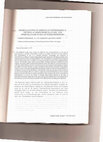
The obtained results show clearly the different role of hemicelluloses in situ and of hemicellulo... more The obtained results show clearly the different role of hemicelluloses in situ and of hemicelluloses as additive. Hemicellulose added as an additive proved to be more effective than hemicellulose in situ as a strength promoter. Accordingly, the utilization of hemicellulose as additive in papermaking might replace application of pulping methods of far reaching protective effect on hemicelluloses. The hemicelluloses extracted from hardwood and rice straw pulps were re-added to the extracted pulps to restore the original pentosan content. The obtained paper sheets showed higher strength than those obtained from the original unextracted pulps. Isolated hemicelluloses Were also added to unextracted pulps to raise their hemicellulose content. It has been proved that raising the hemicelluloses content by addition was more effective on paper strength promotion than raising the hemicellulose content, in situ, in the pulp through adjusting pulping conditions. The use of hemicellulose as an additive increases the hemicellulose concentration on the external fiber surfaces where it can exert its maximum effect. In contrast, a large part of the hemicellulose in situ is located deeper in the cell wall where it cannot contribute to fiber bonding. The extent of retention of hemicelluloses as well as the extent of strength improvement depend on the type of hemicellulose fraction added and on the type of pulp used. Acidification of the sodium salt of hemicelluloses to the non-ionized carboxylic form eliminated its strength promoting effect.

Uploads
Papers by Prof Dr Yehia Fahmy
Keywords: Agricultural Residues (Wastes); Paper and Board manufacture; Sustainability of Paper and Sugar Industries; Green Nanotechnology; Future Prospects
Keywords Sustainable and renewable energy source; Fossil-fuel alternatives; Biomass pyrolysis; Biofuel (bio-oil, biogas, biochar); Charcoal (activated carbon); Hydrogen fuel
in opacity. The use of proteins increased kaolin retention in the paper composites, while keeping the paper strength higher than the blank protein-free paper.
The results show that plant proteins are favorable than synthetic adhesives; because they are biodegradable and do not cause troubles in paper recycling i.e. they are environmentally friendly.
Acetylated samples obtained from biological cotton are characterized by enormously higher water uptake than acetate obtained from conventional cotton. Despite acetyl contents of about 16%, such samples possessed higher WRV than unacetylated conventional cotton. This is accounted for and demonstrates that cellulose derivatives of different properties could be obtained from biological cellulose.
nature fibre in the never-dried state irrespective of plant origin, as well as to
never-dried regenerated cellulose fibres.
Since FSP is a measure of fibre porosity, all never-dried fibrous cellulose may possess the same accessibility to reagents. Reactivity in such a state represents the highest cellulose reactivity in its coherent fibrous state. This was confirmed experimentally. After nature-, air-drying cellulose fibres respectively and after treating them with water, different fibres revert to the original biological cell wall volume or never-dried volume lo different extents. While dry-regenerated fibres possess a high degree of reversion in water into the never-dried state, dry cotton reverts to a much smaller- degree. Acid treatment also failed to affect considerably the reversion of cotton fibres. Treatment with sodium hydroxide solution of about 18% concentration reverts cotton cell wall completely to the original biological volume as far as FSP is concerned. This is termed 100% reversion.
Higher degrees of reversion indicate the weakening or the beginning of the loss of fibrous structure and its transformation into a more or less non fibrous gel structure, usually accompanied by partial cellulose dissolution. Some examples are given in the paper.
The present study outlines in a concise form the history of pyrolysis up to the present time, and it attempts to correlate various aspects of this rather versatile subject. Pyrolysis has now become a more controllable process and could be oriented to deliver solid, liquid and gas products groups within a wider ratio range and with more or less fixed chemical composition. It is even now possihle to speak not only of gasification but also of liquefaction pyrolysis. Technology of pyrolysis is very flexible. The reactors or furnaces, at present, can be stable or mobile, mini or of high capacity, and the process can he slow or very rapid, batch or continuous, mechanized or unmechanized. Pyrolysis being thermally self sustaining is in several aspects preferable to hydrogenolysis and biological gasification for producing chemicals including those used as sources for energy. In this report, pyrolytic fuels including those prepared from synthesis gas are compared to fossil fuels.
This part serves as introduction and background of the following parts of this work.
Vapour phase acetylation after the particles have been pressed into finished form, was more successful. An improvement of about 35% in water resistance was achieved, while the bending strength decreased by only about 5%.
Keywords: Agricultural Residues (Wastes); Paper and Board manufacture; Sustainability of Paper and Sugar Industries; Green Nanotechnology; Future Prospects
Keywords Sustainable and renewable energy source; Fossil-fuel alternatives; Biomass pyrolysis; Biofuel (bio-oil, biogas, biochar); Charcoal (activated carbon); Hydrogen fuel
in opacity. The use of proteins increased kaolin retention in the paper composites, while keeping the paper strength higher than the blank protein-free paper.
The results show that plant proteins are favorable than synthetic adhesives; because they are biodegradable and do not cause troubles in paper recycling i.e. they are environmentally friendly.
Acetylated samples obtained from biological cotton are characterized by enormously higher water uptake than acetate obtained from conventional cotton. Despite acetyl contents of about 16%, such samples possessed higher WRV than unacetylated conventional cotton. This is accounted for and demonstrates that cellulose derivatives of different properties could be obtained from biological cellulose.
nature fibre in the never-dried state irrespective of plant origin, as well as to
never-dried regenerated cellulose fibres.
Since FSP is a measure of fibre porosity, all never-dried fibrous cellulose may possess the same accessibility to reagents. Reactivity in such a state represents the highest cellulose reactivity in its coherent fibrous state. This was confirmed experimentally. After nature-, air-drying cellulose fibres respectively and after treating them with water, different fibres revert to the original biological cell wall volume or never-dried volume lo different extents. While dry-regenerated fibres possess a high degree of reversion in water into the never-dried state, dry cotton reverts to a much smaller- degree. Acid treatment also failed to affect considerably the reversion of cotton fibres. Treatment with sodium hydroxide solution of about 18% concentration reverts cotton cell wall completely to the original biological volume as far as FSP is concerned. This is termed 100% reversion.
Higher degrees of reversion indicate the weakening or the beginning of the loss of fibrous structure and its transformation into a more or less non fibrous gel structure, usually accompanied by partial cellulose dissolution. Some examples are given in the paper.
The present study outlines in a concise form the history of pyrolysis up to the present time, and it attempts to correlate various aspects of this rather versatile subject. Pyrolysis has now become a more controllable process and could be oriented to deliver solid, liquid and gas products groups within a wider ratio range and with more or less fixed chemical composition. It is even now possihle to speak not only of gasification but also of liquefaction pyrolysis. Technology of pyrolysis is very flexible. The reactors or furnaces, at present, can be stable or mobile, mini or of high capacity, and the process can he slow or very rapid, batch or continuous, mechanized or unmechanized. Pyrolysis being thermally self sustaining is in several aspects preferable to hydrogenolysis and biological gasification for producing chemicals including those used as sources for energy. In this report, pyrolytic fuels including those prepared from synthesis gas are compared to fossil fuels.
This part serves as introduction and background of the following parts of this work.
Vapour phase acetylation after the particles have been pressed into finished form, was more successful. An improvement of about 35% in water resistance was achieved, while the bending strength decreased by only about 5%.